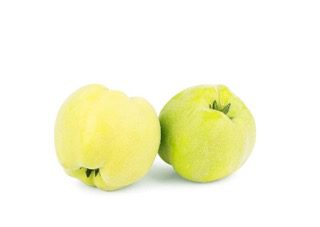

While quince can be part of a dog’s diet, it should be given with caution. Dogs should not be given the stems, leaves, or seeds of the fruit as they contain trace amounts of cyanide that can lead to poisoning and even fatal results in severe cases.
Quince is a great source of antioxidants that can help protect dogs against chronic diseases. It also contains potassium and copper, which can aid in relieving arthritic conditions in dogs.
The seeds of quince are poisonous to dogs as they contain hydrogen cyanide. Ingesting large amounts of these seeds can lead to respiratory failure and even death. Raw quince can also irritate a dog’s throat and cause breathing difficulties. Lastly, the high sugar content of quince makes it unsuitable for dogs with diabetes.
It’s best to cook quince to soften the fruit and release its flavors before giving it to your dog. Quince should be given in moderation as an occasional treat.
Quince, also known as Cydonia oblonga, is a pear-shaped fruit that is native to Southwest Asia but is now grown in many parts of the world. It is also known in some regions as the apple of paradise or the Golden apple. Quince is a good source of antioxidants and contains potassium and copper, which can help combat arthritis in dogs. However, quince seeds, stems, and leaves contain cyanide, which can be fatal to dogs in large amounts. Raw quince can also pose a breathing hazard for dogs due to its high sugar content. Quince should only be given to dogs in moderation and cooked to soften the fruit and release its flavors. If you're unsure about giving your dog quince, two safe alternatives are apples and pears. Have you ever given your dog quince? We'd love to hear about your pet's experience with it. Remember, always check with your veterinarian before adding new foods to your dog's diet.